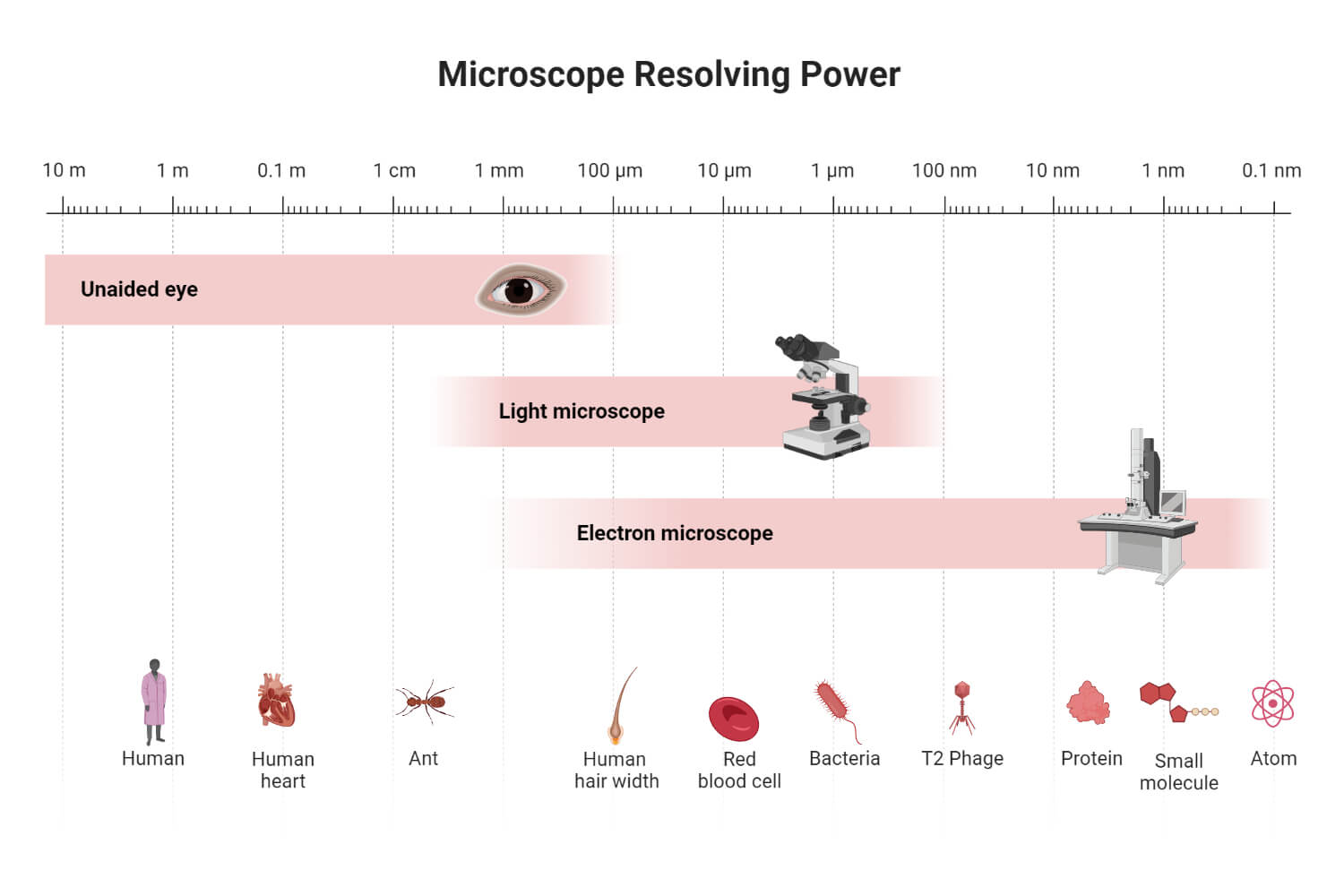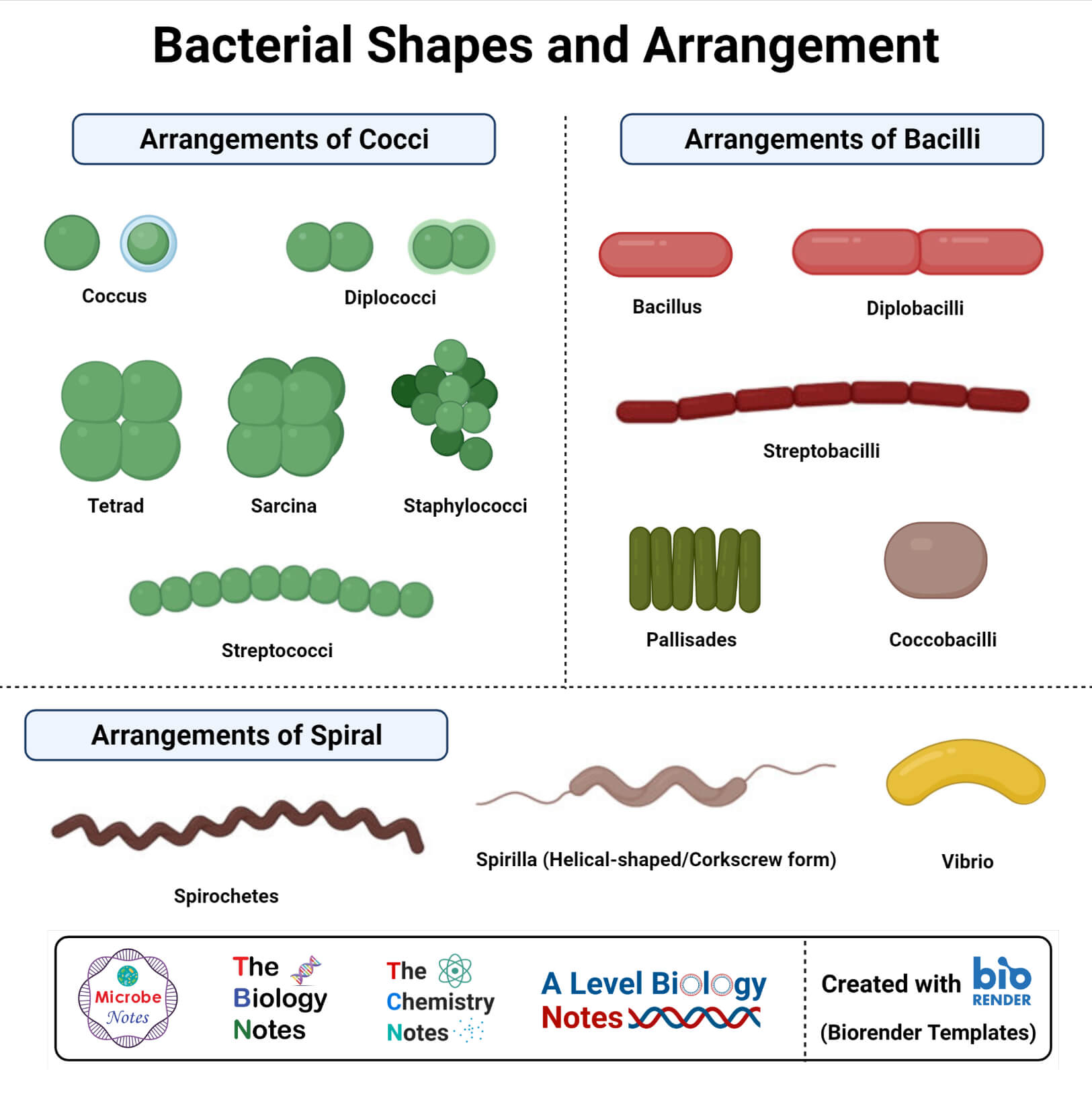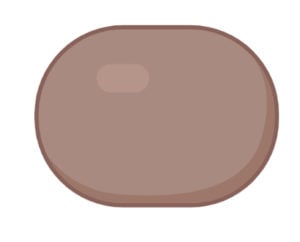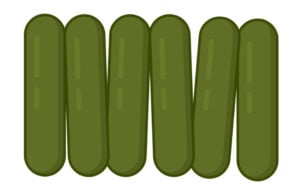Bacteria are a type of biological cell that is prokaryotic and unicellular. Due to the lack of a membrane-bound nucleus, these are simpler than other types of living organisms.
Although only some of them can be seen by naked eyes while the rest are microscopic, they display a wide range of shapes, sizes, and structures.
Interesting Science Videos
Bacterial Size
- The unit of measurement used in bacteriology is the micron (micrometer) which is one-thousandth of a millimeter.
- Bacteria are, in general one-tenth the size of the eukaryotic cell. On average, the size of bacteria ranges from 0.5 to 5 µm.
- However, they can be as tiny as 0.3 µm and as large as 0.7mm.
- The limit of resolution with the unaided eye is about 200 microns, and as many bacteria are smaller than this size, they are not visible with naked eyes.

Among the largest bacteria is Thiomargarita namibiensis, which is up to half a millimeter long and Epulopiscium fishelsoni which is 0.75 mm long.
The smallest bacteria are members of genus Mycoplasma which are only 0.3 µm, as small as the largest viruses.
- The size of common bacteria like Escherichia coli ranges in size from 1.1 to 1.5 µm in diameter.
- It has been observed that the size of bacteria has a significant role in the survival of the organisms.
- Owing to their tiny size, they are capable of surviving and even thriving in various unlikely environments like the vertical sediments in the marine environment.
- Since other organisms are absent in such an environment, bacteria can utilize the available resources.
- Besides, the small size of bacteria favors parasitism and the ability to survive in areas with low nutrition.
- The high surface area-volume ratio also allows the bacteria to take up all the nutrients required for survival while allowing the steady growth and reproduction.
Bacterial Shape

Image created using biorender.com
- Most of the bacteria have a rigid cell wall that provides a definite shape to the bacteria while protecting the internal components.
- Even though this characteristic is valid for the majority of bacteria, they vary in shape that allows them to be classified into different groups based on their forms.
- This wide variety of shapes is determined by the bacterial cell wall and cytoskeleton.
- Even though bacteria have a wide variety of shapes, anyone genus typically exhibits a limited subset of morphologies, indicating that, with a universe of shapes to choose from, individual bacteria adopt only those that are adaptive.
- Bacteria with different shapes present different physical features to the outside world, and these features help cells cope with and adapt to external conditions.
- It has been observed that bacterial shape contributes a measure of survival value in the face of nutrient acquisition, cell division, predators, attachment to surfaces, passive dispersal, active motility, and internal or external differentiation.
The common categories of bacteria based on their shapes are:
Cocci
- The bacteria that are oval or spherical in shape are included called cocci bacteria.
- These may either remain single or attached to one another in groups. They appear flattened when placed in groups.
- It is assumed that coccoid forms were derived from rod-shaped organisms through evolutionary time.
Bacilli (Rod-shaped)
- These are rod-shaped cells that also like cocci, remain either single or attached to other cells.
- Bacilli bacteria are among the first bacteria to have arisen, and this shape is said to be not as advantageous as other shapes. This has been assumed upon the observation of the behavior of filamentous E. coli cells which, though motile and chemotactic, move slowly and cannot tumble to change direction.
Spiral
- This group includes bacteria that are either helical-shaped or curved (comma-shaped).
- The bacteria can range from slightly curved to corkscrew-like spiral.
Arrangements of Cocci
- Cocci bacteria can be arranged either singly, in pairs, in groups of four, in chains, in clusters or cubes consisting of eight cells.
- These cells remain attached during cell division.
Coccus

- This group includes bacteria that are present as a single cell.
Diplococci

- This arrangement results when two bacterial cells occur as a pair (joined together).
- Some of the cells in this arrangement might remain spherical while some might appear flattened, elongated, or bean-shaped.
- Examples: Streptococcus pneumonia, Moraxella catarrhalis, Enterococcus spp, Neisseria gonorrhea.
Tetrad

- Tetrad bacteria are arranged in a group of four cells that remain attached and grow in the attachment after cell division.
- This arrangement results when the cells divide into two planes.
- Examples: Aerococcus, Pediococcus, and Tetragenococcus.
Sarcina

- In this arrangement, the bacterial cells form a group of eight cells.
- This happens when the cells divide in a perpendicular plane.
- The common characteristic associated with these organisms is being strict anaerobe.
- Examples: Sarcina aurantiaca, Sarcina lutea, Sarcina ventriculi.
Streptococci

- Here, the bacteria are arranged in long chains.
- These bacteria are present in family Streptococcaceae, which is characterized by a lack of motility and Gram-positive bacteria.
- Examples: Streptococcus pyogenes, Streptococcus pneumonia, Streptococcus mutans.
Staphylococci

- This type includes bacteria that are arranged in grape-like clusters.
- This results from cell division in both the planes and are characterized by organisms which are immotile and Gram-positive.
- Examples: Staphylococcus epidermidis, Staphylococcus haemolyticus, Staphylococcus aureus, Staphylococcus capitis.
Arrangement of Bacilli
Bacillus

- Bacilli are the bacteria which are rod-shaped and are present as single cells.
- These bacteria can form endospores and are facultative anaerobes.
- Examples: Salmonella enterica subsp, Bacillus cereus, and Salmonella choleraesuis.
Diplobacilli

- As in Diplococci, Diplobacilli also exists in pairs.
- After cell division, the two cells do not divide and grow in an attached arrangement.
- Examples: Coxiella burnetii, Klebsiella rhinoscleromatis, Moraxella bovis.
Streptobacilli

- In this group, bacteria are arranged in chains.
- This results from cell division in a single chain.
- Examples: Streptobacillus moniliformis, Streptobacillus Levaditi, Streptobacillus felis, Streptobacillus hongkongensis.
Coccobacilli

- As the name suggests, coccobacilli resemble both cocci as well as bacilli.
- These are shorter in size and thus, appear stumpy.
- Examples: Chlamydia trachomatis, Haemophilus influenza, Gardnerella vaginalis.
Pallisades

- Pallisades are the type of bacilli bacteria that resemble a picket fence structure as a result of the bent at the point of division during cell division.
- They appear similar to Chinese letters.
- Example: Corynebacterium diphtheria that causes diphtheria.
Arrangement of Spiral
Vibrio

- These are the slightly curved bacteria resembling a comma shape.
- Examples: Vibrio mytili, Vibrio anguillarum, Vibrio parahaemolyticus, Vibrio cholera.
Spirochetes

- Spirochetes are spiral bacteria having a helical shape.
- These are flexible and have an axial filament which helps in motility. These filaments are essential distinguishing character between spirochetes and other bacteria.
- These filaments run throughout the length of the bacteria and thus, help in twisting the motion of the bacteria.
- Examples: Leptospiraspecies (Leptospira interrogans), Treponema pallidum, Borrelia recurrentis.
Spirilla (Helical-shaped/Corkscrew form)

- These bacteria are similar in structure with spirochetes but are more rigid.
- They, too, have a flagellum but lack the endoflagella like in spirochetes.
- Examples: Campylobacter jejuni, Helicobacter pylori, Spirillum winogradskyi.
Other Shapes and Arrangements
Appendaged Bacteria
- The bacteria that produce a unique structure like pillus or fimbriae are called appendaged bacteria.
- These bacteria are more virulent than other bacteria that do not form these appendages.
- Example: Neisseria gonorrheae, the agent of Gonorrhea.
Box-shaped/ Rectangular Bacteria
- Box-shaped bacteria are rectangular in shape and resemble a box.
- Example: Haloarcula marismortui.
Club-shaped Rod Bacteria
- These bacteria are thinner on one side than the other.
- One of the classic examples of this group is Corynebacterium.
Filamentous Bacteria
- These are bacteria that are long, thin, and filament-shaped.
- They, sometimes, divide to form branches resembling strands of hair or spaghetti called mycelium.
- Example: Actinomycetes.
Triangular-shaped Bacteria
- This group includes bacteria that are triangular in shape.
- Example: Haloarcula.
Pleomorphic Bacteria
- The bacteria that do not have a specified shape are included in this group.
- They can change their shape, but in pure culture, they appear to have a definite form.
- Examples: Mycoplasma pneumoniae, M. genitalium.
Stalked Bacteria
- These are the bacteria that possess a stalk on one end of the cell.
- Examples: Caulobacter crescentus.
Star-shaped Bacteria
- The bacteria that look like stars or are star-shaped are included in this group.
- Examples: Stella humosa.
References
- Young K. D. (2007). Bacterial morphology: why have different shapes?. Current opinion in microbiology, 10(6), 596–600. https://doi.org/10.1016/j.mib.2007.09.009
- Al-mohanna, Moshtaq & H., quine. (2016). MORPHOLOGY AND CLASSIFICATION OF BACTERIA.
- Constantino MA et al.(2016). Helical and rod-shaped bacteria swim in helical trajectories with little additional propulsion from helical shape. Science Advances. DOI: 10.1126/sciadv.1601661
Sources
- 3% – https://www.microscopemaster.com/bacteria-size-shape-arrangement.html
- 3% – http://europepmc.org/articles/PMC2169503
- 2% – https://www.ncbi.nlm.nih.gov/pmc/articles/PMC2169503/
- 2% – https://microbiologyinfo.com/different-size-shape-and-arrangement-of-bacterial-cells/
- 1% – https://www.difference.wiki/staphylococcus-vs-streptococcus/
- 1% – https://www.cs.mcgill.ca/~rwest/wikispeedia/wpcd/wp/b/Bacteria.htm
- 1% – https://brainly.com/question/8574377
- <1% – https://www2.palomar.edu/users/warmstrong/lmexer1.htm
- <1% – https://www.thoughtco.com/three-domain-system-373413
- <1% – https://www.studyread.com/classification-of-bacteria/
- <1% – https://www.sciencedirect.com/topics/medicine-and-dentistry/staphylococcus-saprophyticus
- <1% – https://www.sciencedirect.com/topics/biochemistry-genetics-and-molecular-biology/promoter-structure
- <1% – https://www.agriexam.com/plant-disease-causal-organisms
- <1% – https://quizlet.com/236200065/pathophysiology-chapter-6-flash-cards/
- <1% – http://veterinarymicrobiology.in/blog/
- <1% – http://hyperphysics.phy-astr.gsu.edu/hbase/Biology/prokar.html

I am doing my postgraduation and i look up in your site for any updated information in microbiology. <ahref"Thank you so much.
This is the best APP/SITE I have come across. It contains a very good materials about morphology of bacteria. Thank you so much
Thank you very much
This is one the BEST EVER APP/SITE i have come across. I am doing my postgraduation and i look up in your site for any updated information in microbiology. Thank you so much.
Good information about morphology of bacteria.